
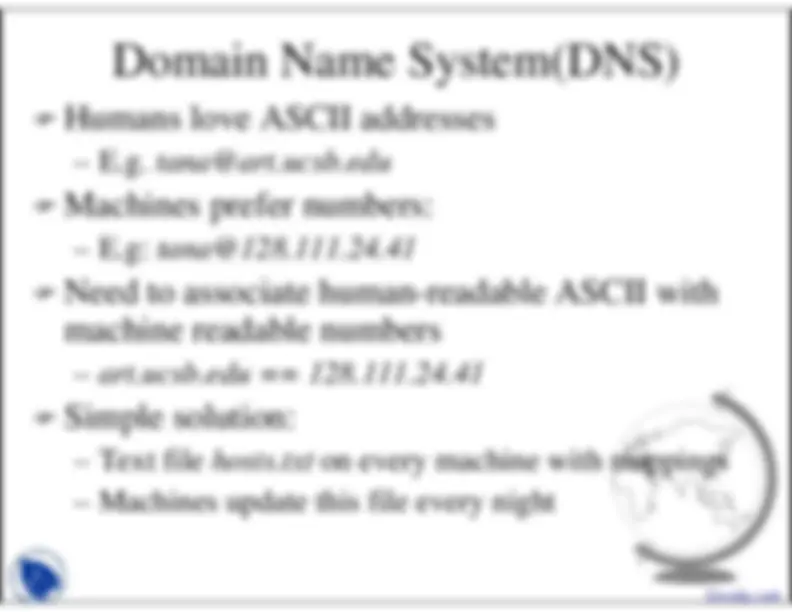
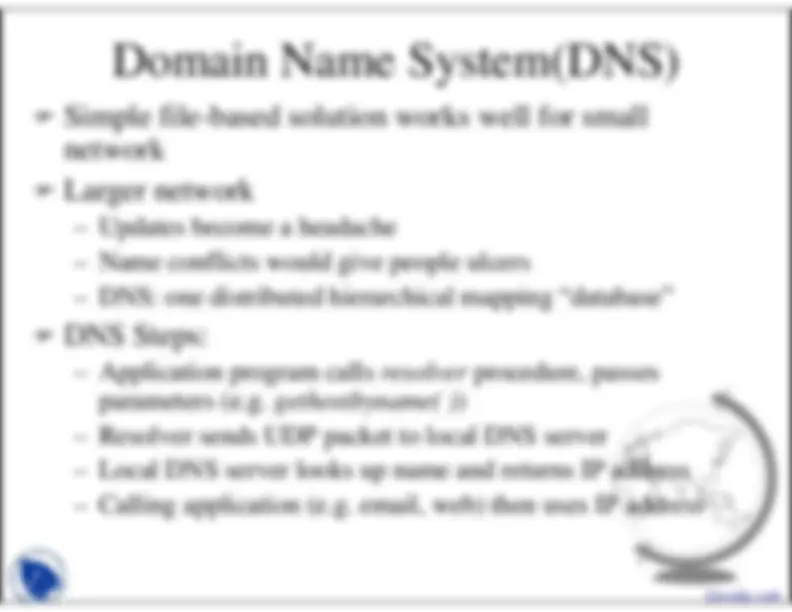
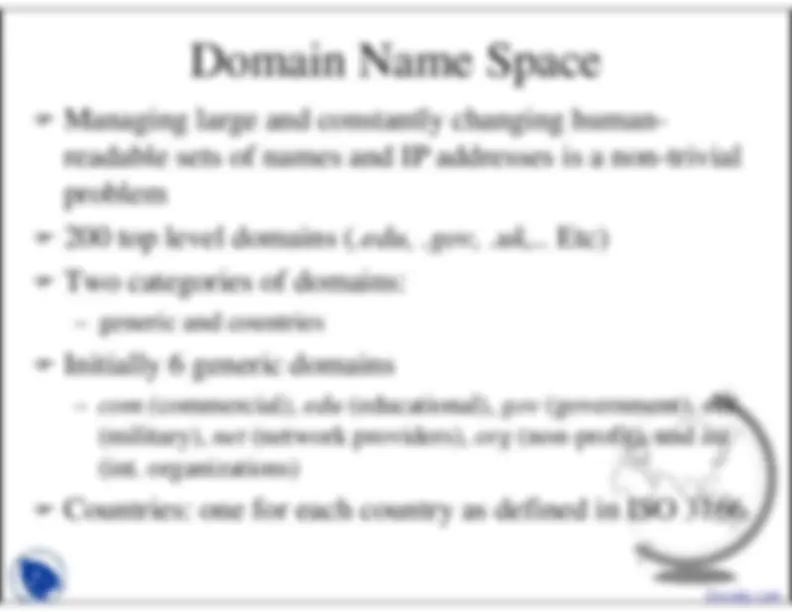
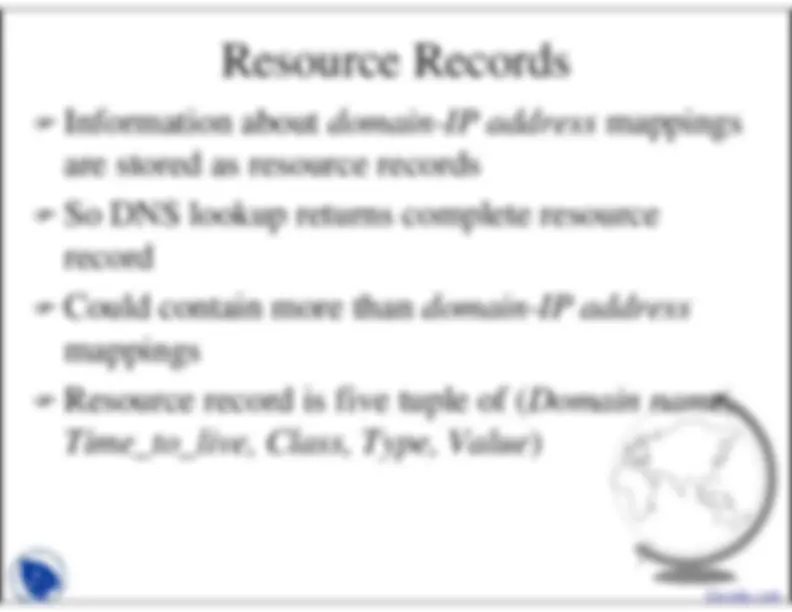
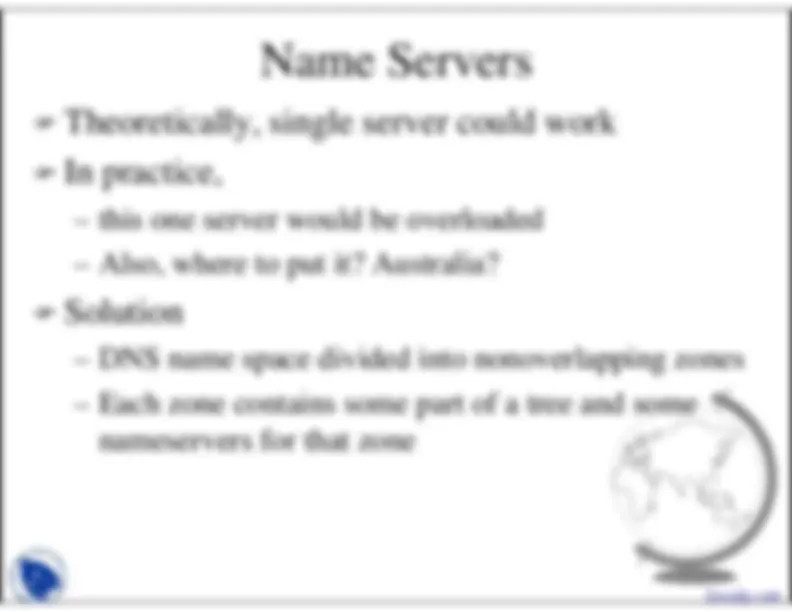
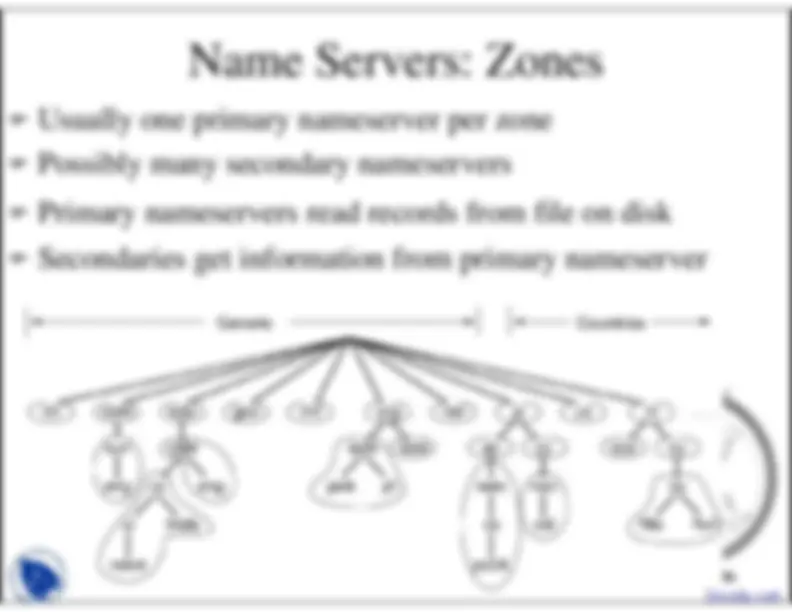


Study with the several resources on Docsity

Earn points by helping other students or get them with a premium plan


Prepare for your exams
Study with the several resources on Docsity

Earn points to download
Earn points by helping other students or get them with a premium plan
Community
Ask the community for help and clear up your study doubts
Discover the best universities in your country according to Docsity users
Free resources
Download our free guides on studying techniques, anxiety management strategies, and thesis advice from Docsity tutors
Main points of Local and Wide Area Networks are: Application Layer, Domain Name System, Electronic Mail, World Wide Web, Machines Prefer Numbers, Humans, Addresses, Machine Readable Numbers, Simple Solution, Larger Network
Typology: Slides
1 / 12

This page cannot be seen from the preview
Don't miss anything!







resolver^ procedure, passes parameters (e.g.
gethostbyname( )
)
)^ Managing large and constantly changing human-readable sets of names and IP addresses is a non-trivialproblem )^ 200 top level domains (
.edu, .gov, .uk,..
Etc)
)^ Two categories of domains:– generic and countries )^ Initially 6 generic domains–^ com (
commercial
) ,^ edu^ (educational),
gov^ (government),
mil
(military),^ net
(network providers),
org^ (non-profit), and
int
(int. organizations) ) Countries: one for each country as defined in ISO 3166
)^ Getting second-level domain like
EmmanuelAgu.com
is
easy– Simply contact registrar to find out if name is taken– Registrar’s: www.networksolutions.com– Registrar also checks for trademark infringements– If available, Emmanuel simply pays small fee and launches ) Domain is named by path upward from it to namedroot, separated by periods– E.g: Engr. Department at Sun Microsystems (
eng.sun.com
)
eng.yale.edu
)^ Sub-domains applications to manager:– E.g. New VLSI dept. at Yale (
vlsi.cs.yale.edu
) simply talks to
the manager (system admin) of (
cs.yale.edu )
Docsity.com
)^ Usually one primary nameserver per zone )^ Possibly many secondary nameservers )^ Primary nameservers read records from file on disk )^ Secondaries get information from primary nameserver
)^ When resolver gets query, passes it to one of localnameservers )^ If domain under queried nameserver, returns^ authoritative record )^ Authoritative
comes from file, not cached (outdated) )^ If requested domain is remote, send message to top-levelname server for requested domain )^ E.g: first time request for
linda.cs.yale.edu
Overview of resolving process